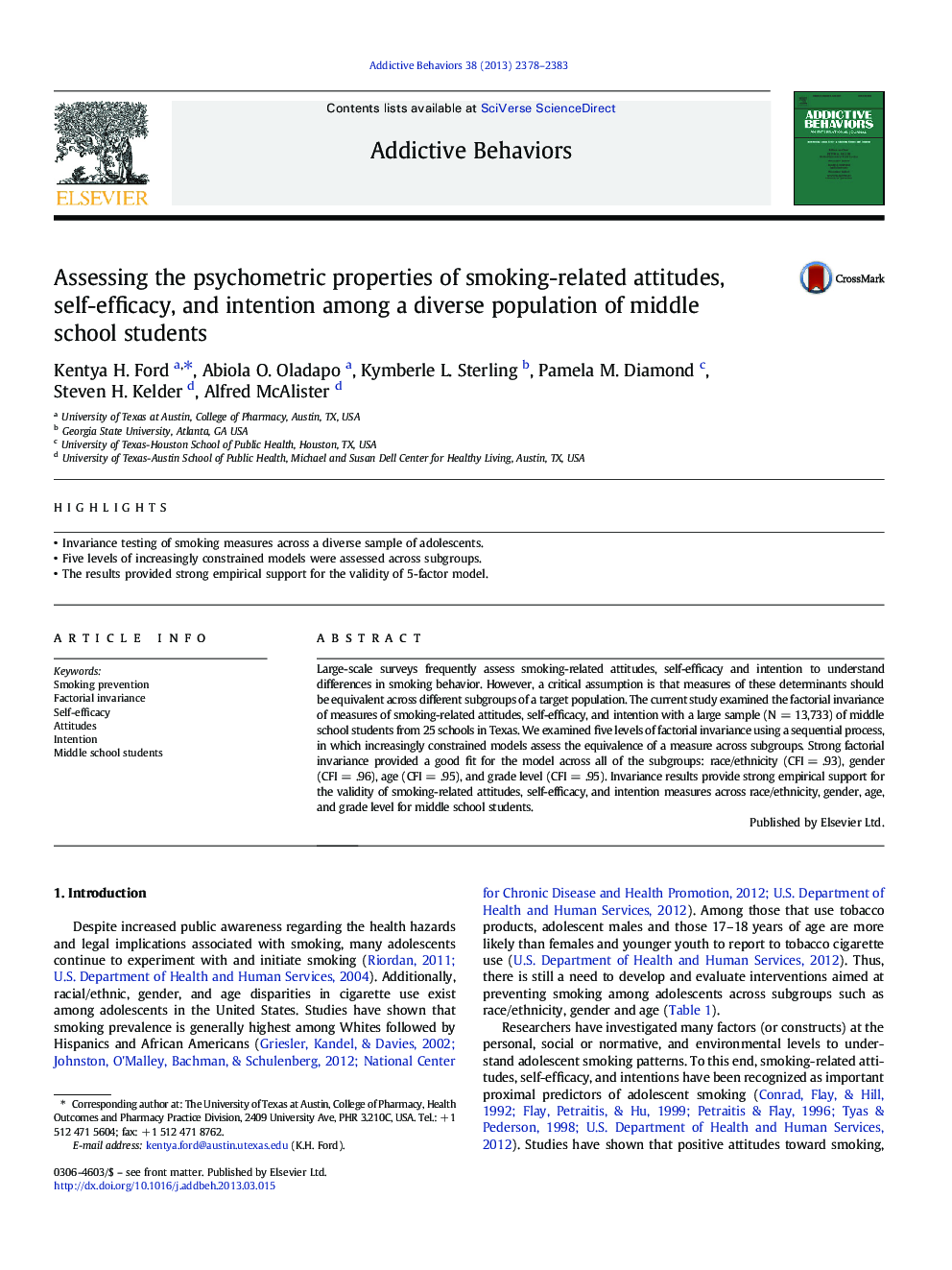| Article ID | Journal | Published Year | Pages | File Type |
|---|---|---|---|---|
| 899046 | Addictive Behaviors | 2013 | 6 Pages |
•Invariance testing of smoking measures across a diverse sample of adolescents.•Five levels of increasingly constrained models were assessed across subgroups.•The results provided strong empirical support for the validity of 5-factor model.
Large-scale surveys frequently assess smoking-related attitudes, self-efficacy and intention to understand differences in smoking behavior. However, a critical assumption is that measures of these determinants should be equivalent across different subgroups of a target population. The current study examined the factorial invariance of measures of smoking-related attitudes, self-efficacy, and intention with a large sample (N = 13,733) of middle school students from 25 schools in Texas. We examined five levels of factorial invariance using a sequential process, in which increasingly constrained models assess the equivalence of a measure across subgroups. Strong factorial invariance provided a good fit for the model across all of the subgroups: race/ethnicity (CFI = .93), gender (CFI = .96), age (CFI = .95), and grade level (CFI = .95). Invariance results provide strong empirical support for the validity of smoking-related attitudes, self-efficacy, and intention measures across race/ethnicity, gender, age, and grade level for middle school students.
